Ryukyu Cuisine
Ryukyu(ルーチュー ruchu)[琉球] is an island archipelago region in the Pacific, curving between Japan’s main islands and Taiwan. The region, including the Amami, Okinawa, Miyako, and Yaeyama islands, is connected by geography, history, and culture. Today it is governed by Japan, though long ago these islands were ruled by the Ryukyu Kingdom, which interacted with Ming and Qing Dynasty China as well as old Japan. Ryukyu has its own languages, related to Japanese, and its own religious and cultural practices. It is also the birthplace of karate. Okinawa(ウチナー uchina)[沖縄] is the largest and most populous island of Ryukyu.
Ryukuan cuisine shares many features with cuisines throughout Japan, namely rice as a staple food, tofu and soy products, seaweed, azuki, and so on. Ryukyuan muchi is very similar to Japanese mochi. Ryukyuan cuisine features miso soup and other dishes comparable to Japanese dishes. Rice is common, but eaten far less than in the typical Japanese diet. Although fish and seafood feature less in Ryukyu cooking than in typical Japanese cuisine, seaweed is abundant and commonly used.
Ryukyan cuisine also shares features with those of Austronesian cultures, including indigenous Taiwanese and pacific island cuisinese. Ryukyuan muchi is wrapped in shell ginger leaves(サニン sanin), which are also used to wrap rice and other grains by indigenous Taiwanese. Taro and other starchy tubers are significant foods for indigenous Taiwanese, the Ivatan and other people of the Philippines, as well as islanders throughout the Pacific. Notably, taro stems are consumed by Ryukyuans and some other people in the Pacific. Unripe papaya is also popularly used throughout the Pacific regions.
Hokkien Chinese influence is also apparent in Ryukyuan cooking techniques, seasonings, and fondness of all parts of pork. Because of close geography and shared Japanese and Hokkien influence, Ryukyuan cuisine shares similarities with Taiwanese cuisine. Spam and some Western ingredients appeared in Ryukyu, especially Okinawa, as well as other islands in the Pacific, due to the war history and American military presence.
Rice may be traditionally cooked in hagama[羽釜], a special iron pot, or in a modern rice cooker. Many dishes are cooked in a metal pan or perhaps a wok. Clay cooking pots or metal pots may be used for braising and cooking soup. Amui(アームイ amui)[泡盛] is prepared in special large traditional clay pots. Pickles(カラス karasu) are salted and sealed in jars. In Okinawa, chopsticks are called umeshi(うめーし umeshi)[赤黄箸]; they traditionally have red tops and yellow points.
Usanmi(ウサンミ usanmi)[御三味] is a traditional set meal in a box made for Qingming or tomb-sweeping festival(シーミー shimi)[清明祭] and similar festivals. Other foods like muchi, fuchagi, and pork soup are prepared on certain holidays as well.
Ingredients
Grains
Short-grain rice(くみ kumi)[米] is the most common type of rice, served steamed with most meals. Mochi rice(ムチグミ muchigumi)[もち米] is used to make chewy rice cakes called muchi(ムーチー muchi)[餅]. Rice vinegar is produced and used.
Long-grain rice is used to produce amui(アームイ amui)[泡盛] or awamori, a type of alcohol. Amui has been produced in the Ryukyu region since ancient times; long-grain rice was probably brought from mainland Southeast Asia. Amui is used for making tofuyou and koregusu; it is also added to soups and other dishes. Amui can be aged to improve the flavor, sometimes for many years. Aged amui(クース kusu)[古酒] is said to get better every year and some has been aged for centuries.
Legumes
Soybeans are an important product used for making soy sauce, tofu, and more. Miso is produced from soy and other ingredients. It tends to be sweet here; both white miso(白みそ) and red miso(赤みそ) can be found, as well as mixtures of these. A unique Ryukyu miso is andansu(アンダンスー andansu)[油味噌], which usually uses sweet or mixed miso and has bits of skipjack tuna or pork added in. Tofuyou[豆腐よう] is a fermented soy condiment developed in Ryukyu, similar to Chinese fermented tofu[豆腐乳].
Island tofu[島豆腐] is extra firm tofu, a specialty of Ryukyu cuisine, often added to stir-fry dishes. It was traditionally coagulated by adding sea water; nigari[にがり] is used as a coagulant today. Island tofu is pressed with weights for a long time to get extra firm texture. Another type of tofu from Ryukyu is yushidofu[ゆし豆腐], or unpressed tofu; it can be seasoned and served as a soup dish.
Vegetables
Ryukyuan cuisine includes several types of sweet potatoes and related tubers(ンム nmu). Tanmu(ターンム tanmu)[田芋] is a small purple variety of taro native to the Ryukyu islands. The corm is used, often mashed, as well as the stem part(ムジ muji). Some dishes also use satoimo(チンヌク chinniku)[里芋].
Purple sweet potato[紅芋] is famous for its touted health benefits and stunning color; indeed they have been a major food of the Ryukyuan people for centuries, probably contributing to their impressive longevity. Other types of sweet potato are common as well as sweet potato leaf(カンダバー kandaba).
Ryukyu region has several unique crops deemed “island” products: island carrot(シマニンジン)[島人參], a light-colored, long, and thin variety of carrot; island shallot(ラッチョウ racchyou)[島らっきょう], an elongated type of shallot, often pickled; and island pepper(シマコショウ), an indigenous peppercorn variety. The water around the Ryukyu archipelago is said to give a good flavor to its sea salt(シママース).
Common cooking vegetables include daikon[大根], bitter melon(ゴーヤ goya), winter melon(シブイ shibui), luffa(ナーベーラー nabera), and burdock(グンボー gunbo). Green or unripe papaya(パパヤー papaya) is normally used like a vegetable. Mowi(モーウィ mowi)[赤毛瓜] is a local red-skinned squash.
Fuchiba(フーチバー fuchiba), also known as yomogi or Japanese mugwort, gives a natural green color to some dishes. Other common greens include nigana(ニガナ nigana), a bitter herb added to soup; handama(ハンダマ handama)[水前寺菜], a medicinal herb often eaten raw, blanched, or sauteed; sakuna(サクナ sakuna)[長命草], a sort of wild coastal parsley; chard(ンスナバー nsunaba); and mustard greens[からし菜].
Many sweet dishes include azuki[小豆]. Sugar cane grows well in the Ryukyu islands, and various forms of sugar make their appearance in Ryukyuan sweets. Many traditional desserts call for kokuto[黑糖], unrefined brown sugar.
For traditional festivals, muchi is wrapped with or placed on shell ginger leaves(サニン sanin). These leaves give a subtle fragrance. Some Ryukyuan festival meals feature konnyaku[こんにゃく].
Fruit
Shikuwasa(シークヮーサー shikwasa) is a wild citrus similar to calamansi and mandarins. Tachibana[タチバナ] is also native to the Ryukyu area. Tankan citrus[タンカン] is commonly grown.
Other delicious fruits found in the Ryukyu islands include starfruit, dragonfruit, mango, pineapple, and passionfruit.
Seaweed and Algae
Kombu(クーブ kubu)[昆布] is used in a variety of ways; it is stir-fried, added to soups, tied up, wrapped, and eaten raw. It is typically not removed from soup when added for flavor. Mozuku(モズク mozuku) is a popular seaweed often prepared with rice vinegar. Asa(アーサ asa)[石蓴] is another type of seaweed sometimes called sea lettuce. Umibudou[海ぶどう], or sea grapes, is a delicacy.
Meat and Seafood
Squid and cuttlefish(イカ ika) meat is used as well as its ink(クリ), which is added to soup and porridge. Flowered squid[花イカ] typically uses a certain type of cuttlefish(クブシミ kubushimi)[甲いか].
Katsuobushi[鰹節], made from dried skipjack tuna[カツオ], is often used for soup stock. A type of rabbitfish called suku(スク suku) is salted to make suku pickles(スクガラス sukugarasu). Grouper(ミーバイ mibai), bluefin and yellowfin tuna[マグロ], and a variety of other fish are used, sometimes eaten as sashimi.
Many varieties of fish cake(カマブク kamabuku) made from pureed white fish meat can be found in Ryukyu cuisine, especially castella fish cake(カステラカマブク kasutera kamabuku), red and white fish cake[紅白かまぼこ], and fried fish cake(チキアギ chikiagi)[揚げかまぼこ]. Meat fish cake(シシカマブク shishi kamabuku)[肉かまぼこ], a mixture of pork and fish paste, is a specialty of Ryukyuan cuisine.
The Ryukyuan people prize the banded sea krait(イラブー irabu), a venomous sea snake native to the western Pacific Ocean. It is considered to have many health benefits, especially for pregnant women.
Pork is the most popular meat in Ryukyuan cuisine. Traditionally, people hunted or raised boar, though domestic pigs are common today. Spare ribs(ソーキ), trotters(てびち), and ear(ミミガー)[耳皮] are favorite parts. The United States introduced luncheon meat to Okinawa via military involvement during and after World War II.
Dishes
- cooked rice[飯]
- jushi(ジューシー jushi)[雑炊]: rice porridge with added ingredients such as carrot and seaweed
- pork egg onigiri(ポーク卵おにぎり): pork luncheon meat and egg with sweet miso sauce wrapped in rice and nori
- tofuyou(豆腐よう): fermented soy condiment
- koregusu(コーレーグス)[高麗胡椒]: condiment of chilis preserved in amui
- vinegar mozuku(モズク酢): mozuku seaweed in vinegar
- shirae(スーネー): a sort of salad
- usachi(ウサチ): pickles or seasoned food
- chanpuru(チャンプルー): stir fried vegetables, especially bitter melon, typically with island tofu and meat added
- irichi(イリチー): sauteed salad, often with unripe papaya, burdock, or kombu
- carrot shirishiri(ニンジンシリシリー): sauteed seasoned shredded carrot
- duruwakashi(ドゥルワカシー): mashed tanmu root and stem
- nbushi(ンブシー): vegetables such as luffa and winter melon braised with miso, often with island tofu and meat added
- rafute(ラフテー)[羅火腿]: pork braised in soy sauce, awamori, and sugar
- miso soup(みそ汁)[味噌汁]: miso-flavored soup with various ingredients, often served in large individual bowls
- Okinawa soba(スバ)[沖縄そば]: noodles in broth
- inamuduchi(イナムドゥチ)[猪もどき]: soup with white miso stock, wild boar or pork, shiitake, kamaboko
- uni(ウーニー)[大煮]: soup with pork, daikon, kelp stock, dashi, and soy sauce
- nanku(ヌンクー)[暖鍋]: mixed soup with ingredients such as pork, daikon, taro, greens in broth of amui, kombu, and katsuobushi
- asa soup(アーサ汁): soup with asa seaweed and island tofu
- yushidofu(ゆし豆腐): unpressed tofu soup with simple seasoning and garnish
- squid ink soup(イカスミ汁)[イカ墨汁]:
- irabu shinji(イラブーシンジ): soup made from a type of venomous sea snake
- jimamidofu(ジーマーミ豆腐): sweet tofu made from peanut
- muchi(ムーチー)[餅]: sticky rice cake steamed in shell ginger leaf, often flavored with sweet potato, brown sugar, or other ingredients
- fuchagi(フチャギ): sticky rice cake coated with azuki
- umuni(ウムニー): mashed purple sweet potato, sometimes with a dash of shikuwasa juice to accentuate the color
- dingaku(ディンガク): sweet mashed taro root
- zenzai(善哉): sweet azuki porridge, usually topped with shave ice
Related Links
Recipes
-
Carrot Shirishiri
Carrot shirishiri, or ninjin-shirishiri(ニンジンシリシリー), is a simple Ryukyuan dish of sauteed, julienned carrots. Usually miso is added for seasoning, and […]
-
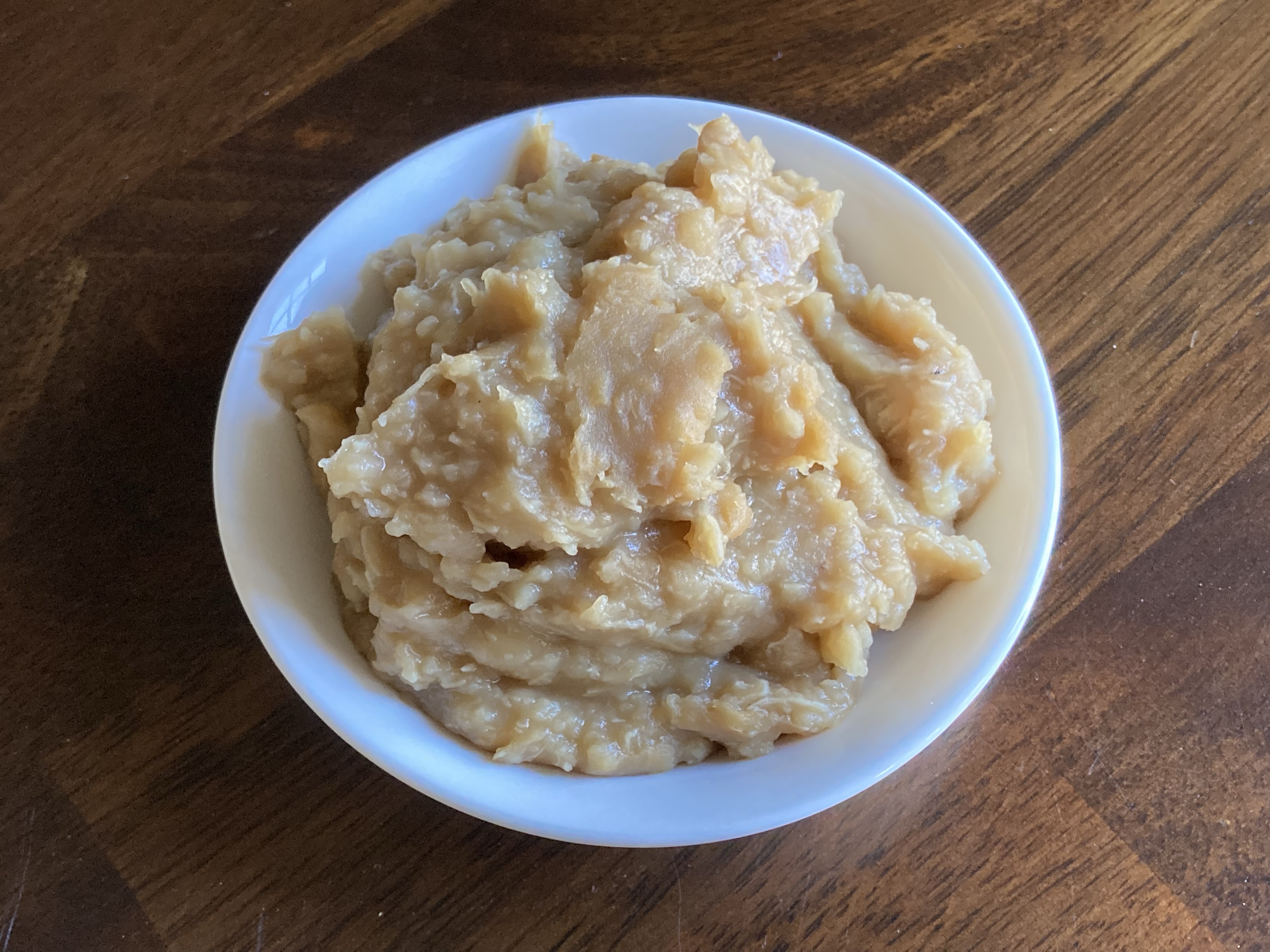
Dingaku
Dingaku(ディンガク) is sweetened mashed taro from the Ryukyu islands. It is traditionally made from a Ryukyuan variety of taro called […]
-
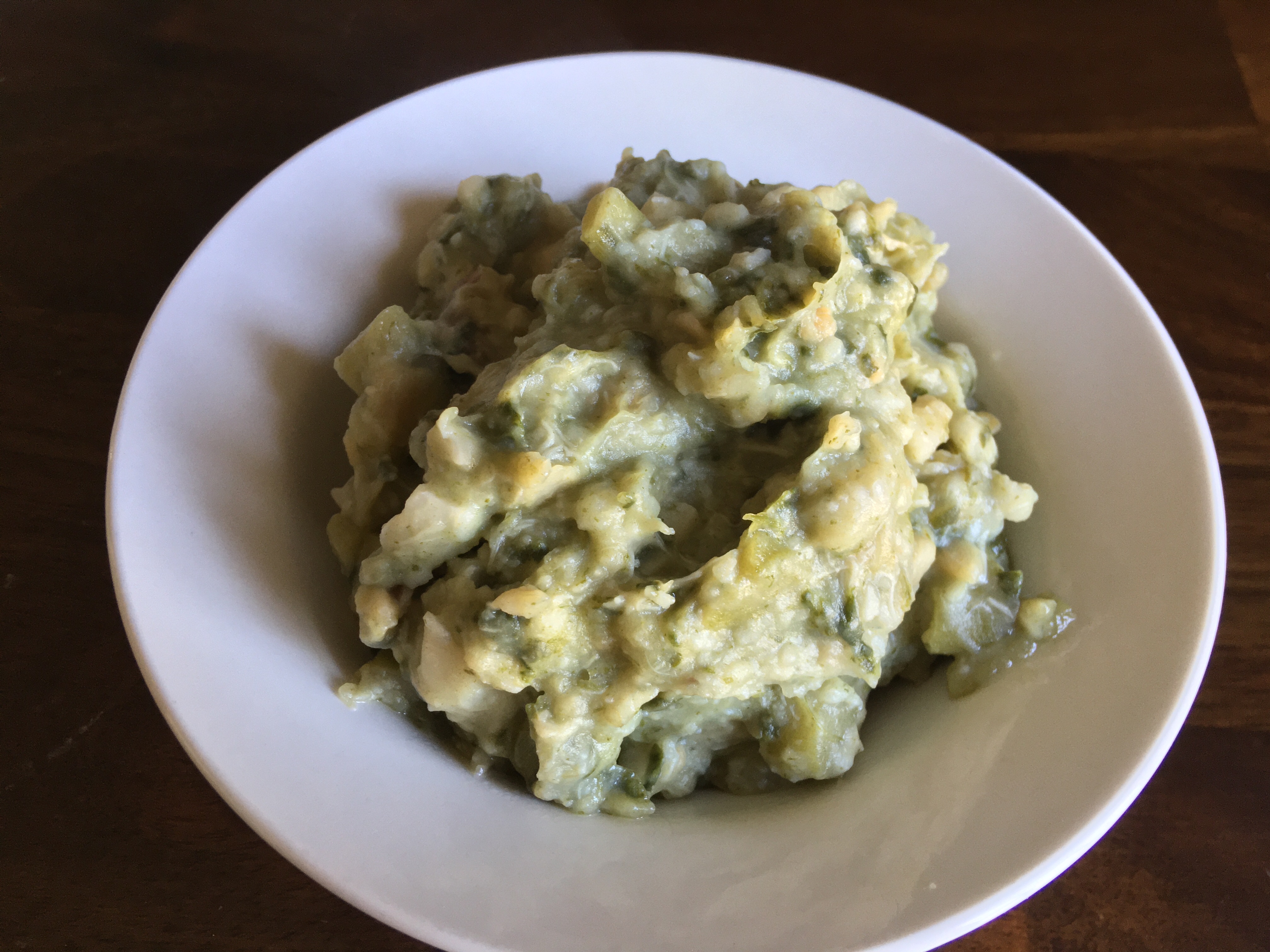
Duruwakashi
Duruwakashi(ドゥルワカシー) is a Ryukyuan dish made of mashed taro corm and chopped taro stem. The name duruwakashi is an Okinawan […]
-
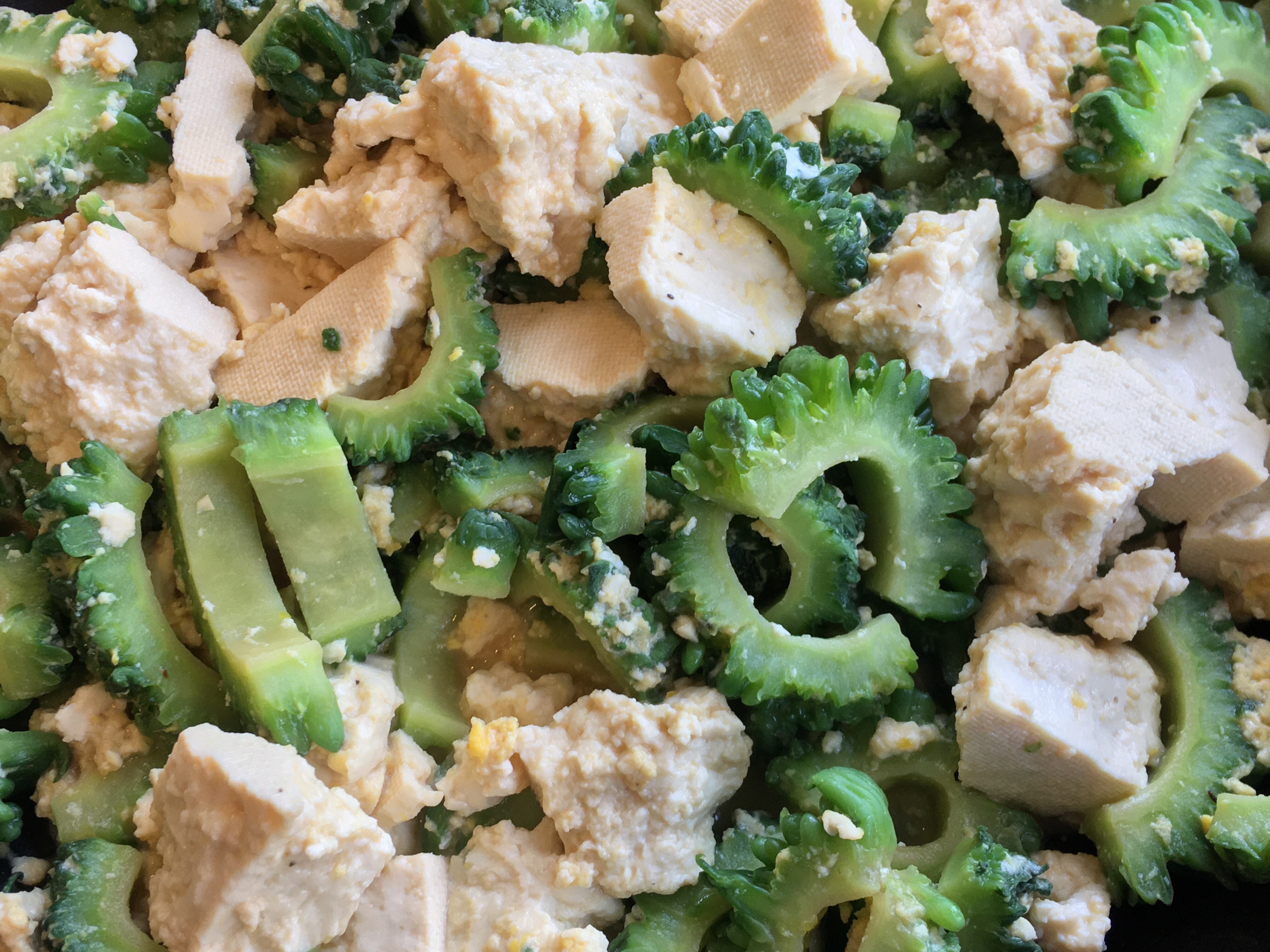
Goya Chanpuru
Goya chanpuru(ゴーヤチャンプルー) is a Ryukyuan stir fry dish with bitter melon. One of the most iconic dishes of Okinawa, goya […]
-
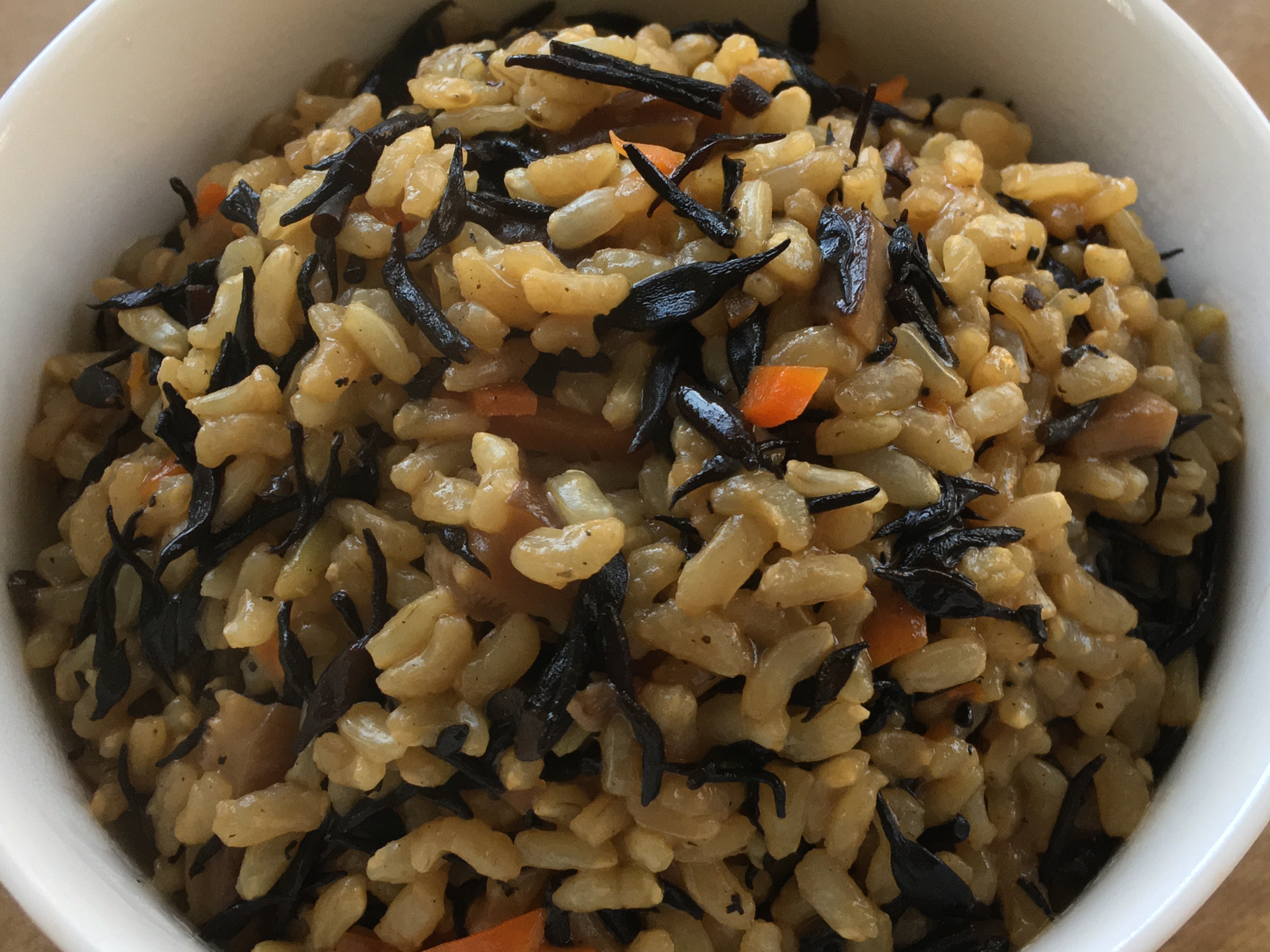
Kufa Jushi
Kufa jushi(クファジューシー) is an easy and quick Ryukyuan rice dish with other ingredients mixed in. Typically seaweed, carrot, mushroom, cooked […]
-
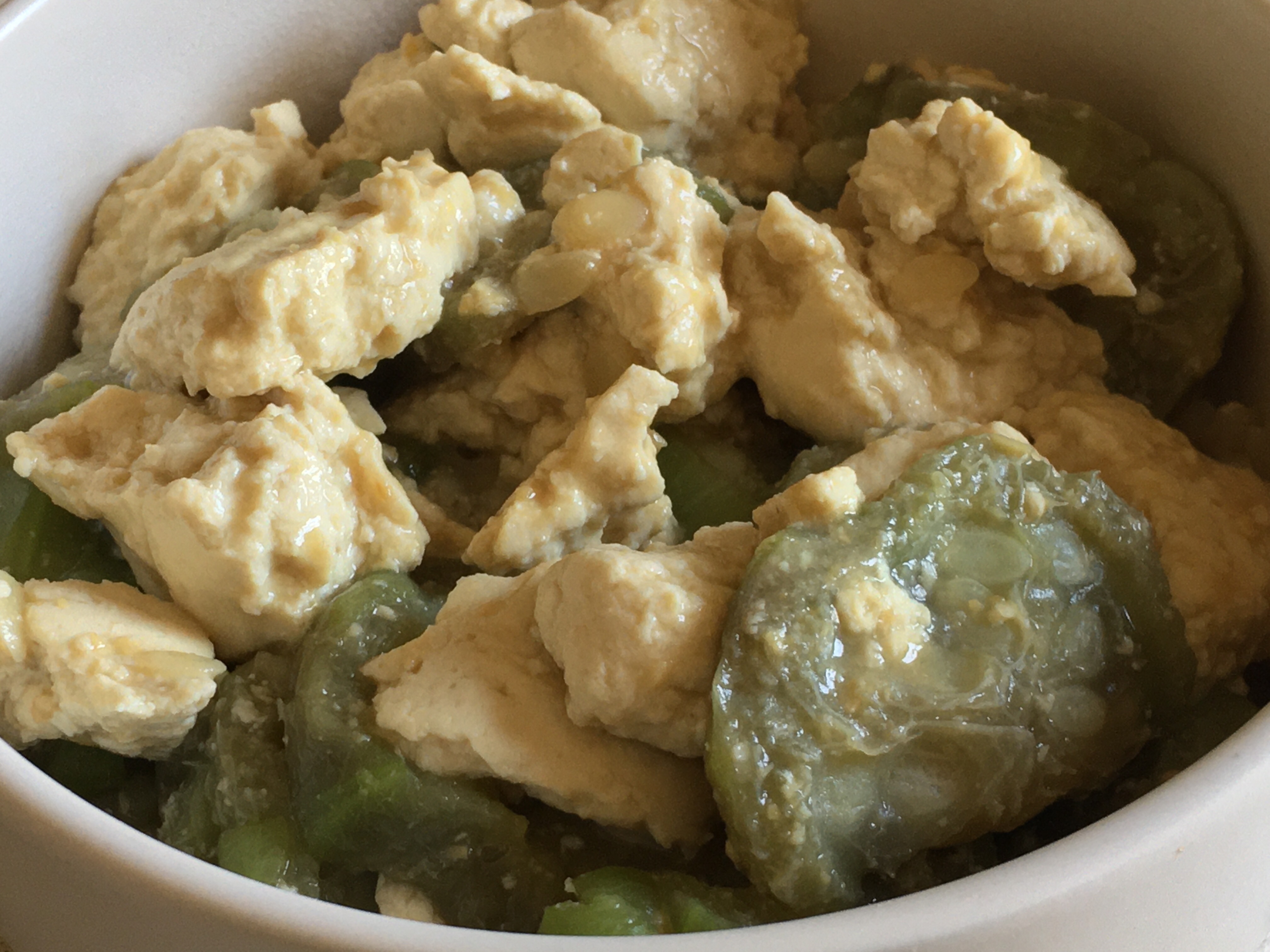
Nabera Nbushi
Nabera nbushi(ナーベラーンブシー) is a Ryukyuan stir fry dish with luffa(ナーベラー nabera). It usually has island tofu(島豆腐 shima-dofu) and spam or […]
-
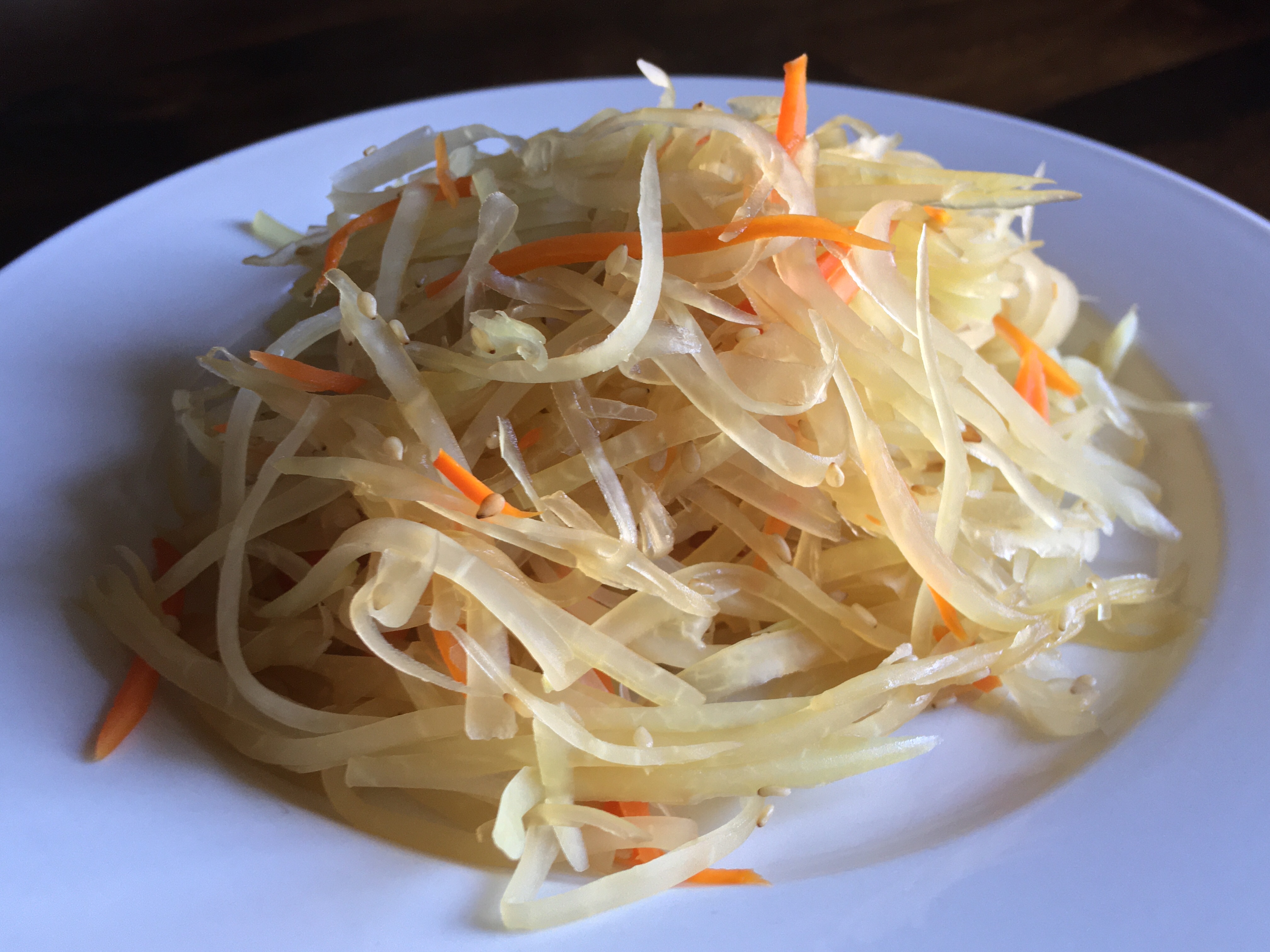
Papaya Irichi
Papaya irichi(パパイヤイリチー) is a simple sauteed papaya dish from the Ryukyu islands. Unripe, green papaya is cooked with carrot, stirred, […]
-
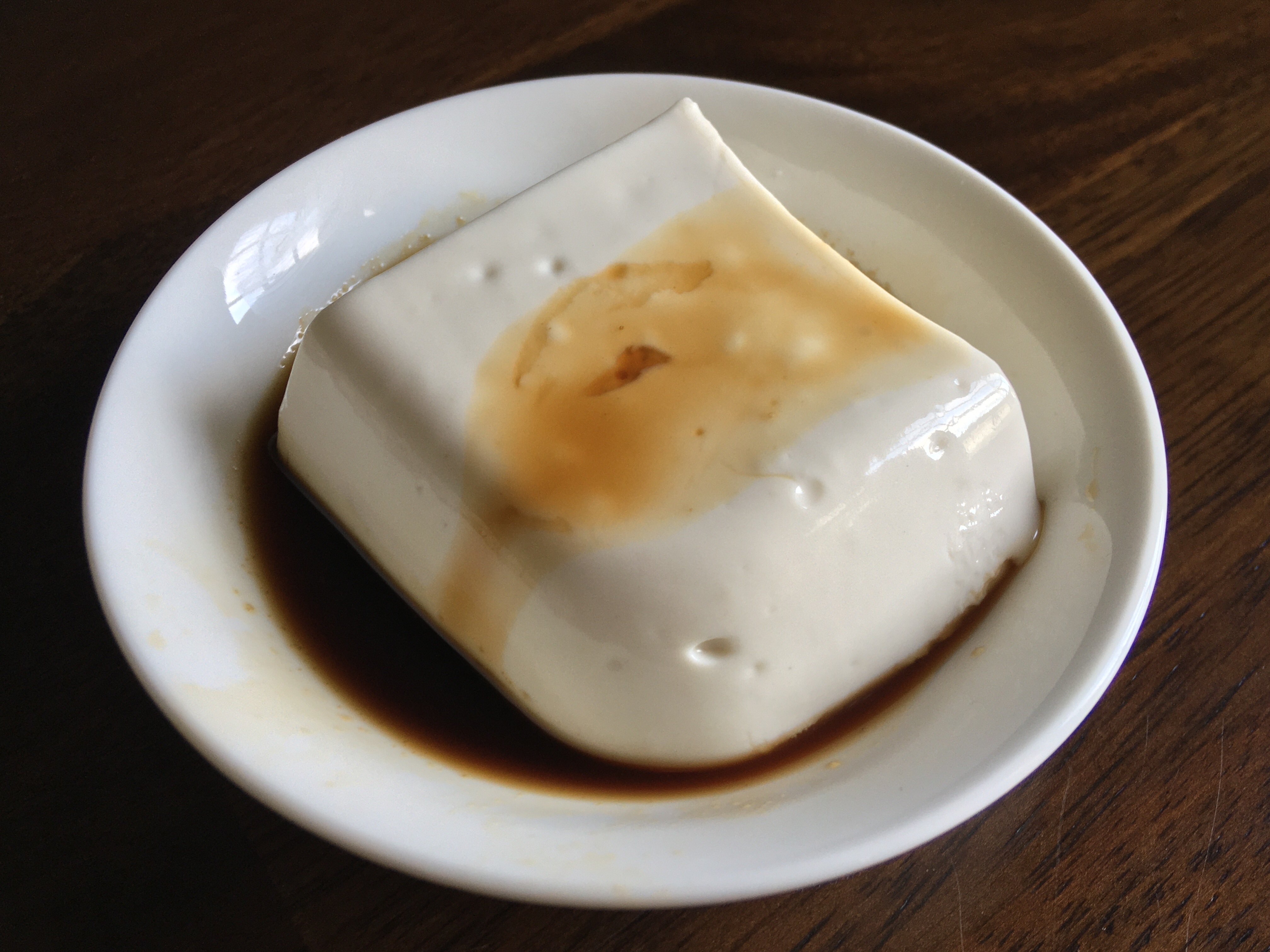
Peanut Tofu
Peanut tofu(ジーマーミ豆腐 jimami-dofu) is a traditional Ryukyuan food made from peanut(ジーマーミ jimami)[地豆] and sweet potato starch(ンムクジ nmu kuzu). Long ago, […]
-
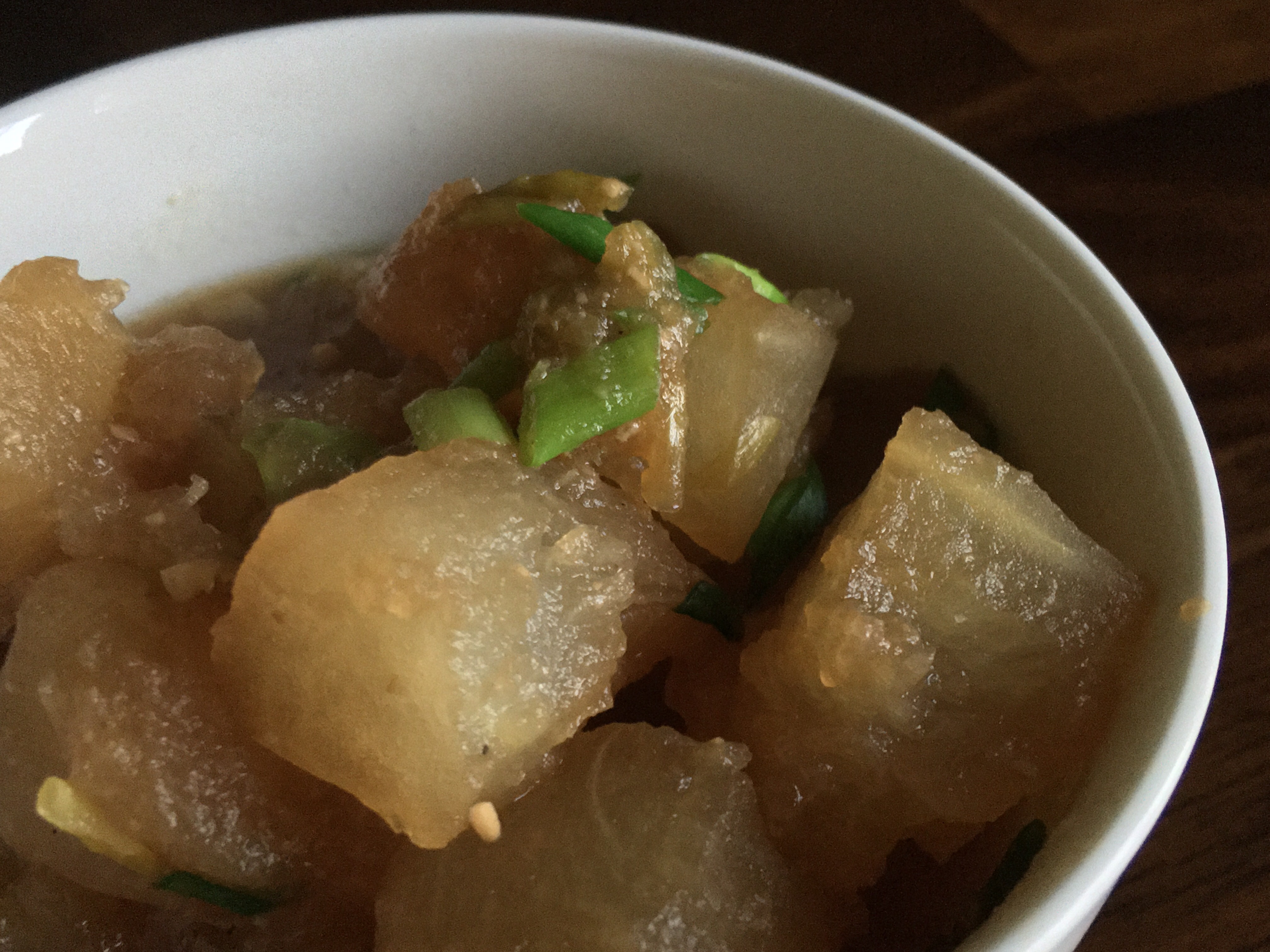
Shibui Nbushi
Winter melon nbushi(シブインブシー shibui nbushi) is Ryukyu-style braised winter melon with miso. Winter melon(シブイ shibui), also known as wax gourd, […]
-
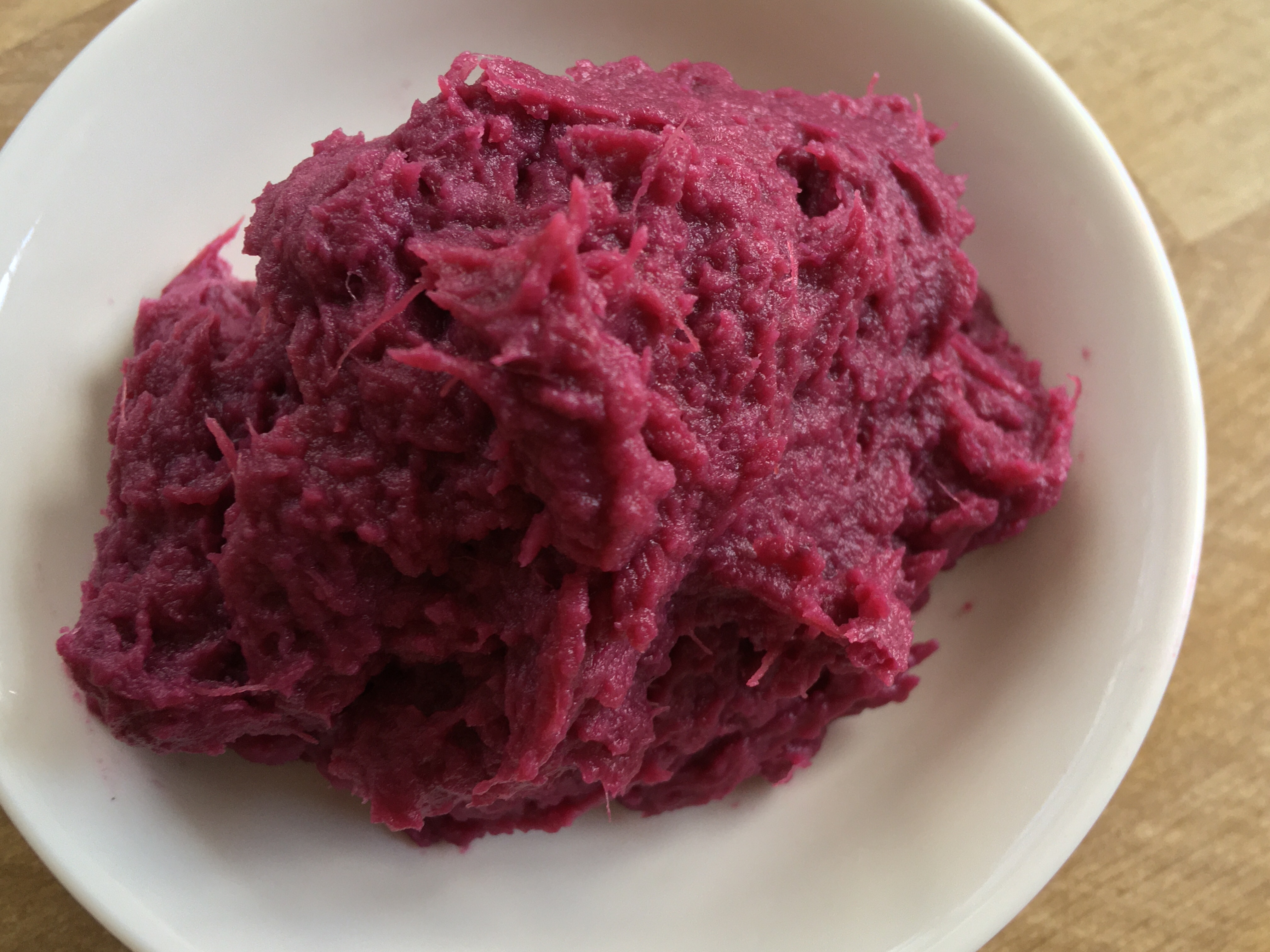
Umuni
Umuni(ウムニー) is a simple Ryukyuan sweet made from mashed purple sweet potato(紅いも beni-imo). Purple sweet potato is popular in the […]
-
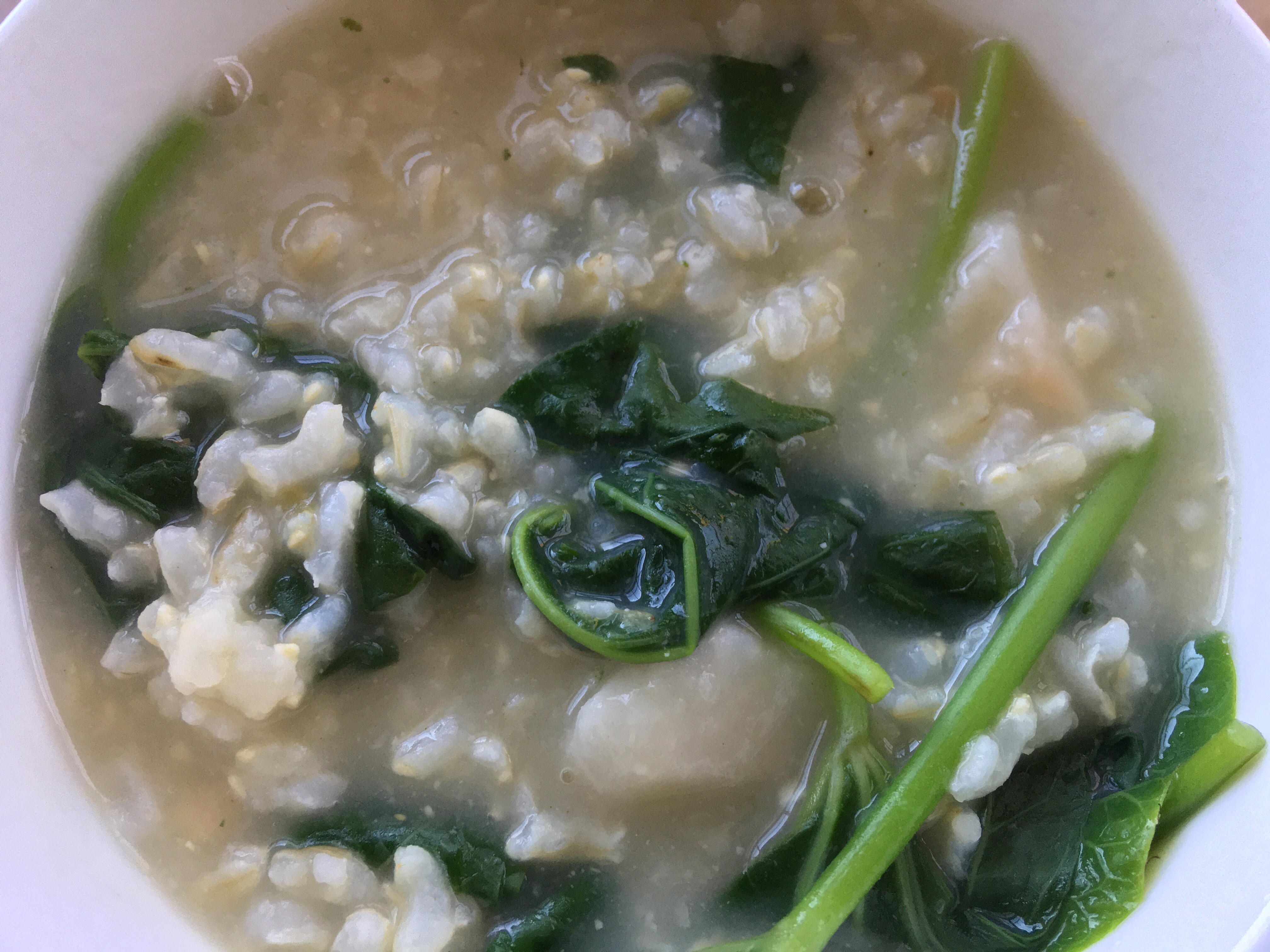
Yafara Jushi
Yafara jushi(ヤファラジューシー) is a Ryukyuan rice porridge with medium consistency. Yafara jushi combines cooked rice and water or dashi, so […]
-
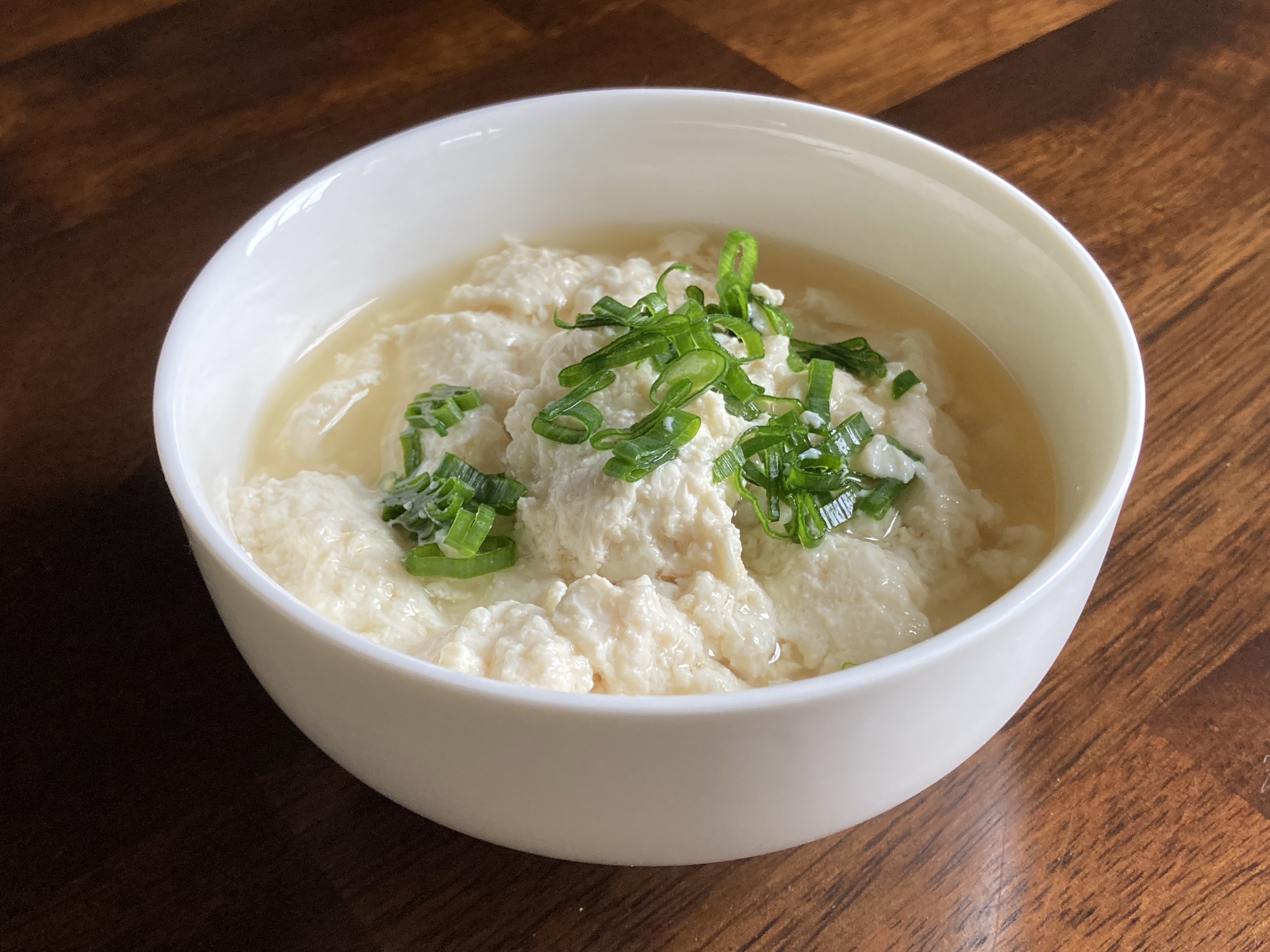
Yushi Tofu
Yushi tofu(ゆし豆腐 yushidofu) is an unpressed tofu dish from Ryukyu cuisine. Yushi tofu is made from soy milk and has […]